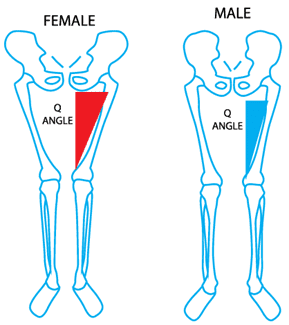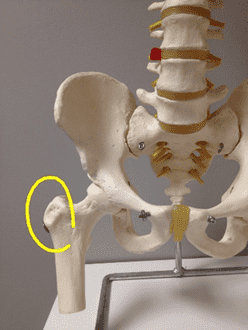Greater Trochanteric Pain Syndrome
Greater Trochanteric Pain Syndrome (GTPS) is a very common condition that is said to affect approximately 10-25% of people over the course of their lifetime. In this blog we will talk a bit about the relevant anatomy to the area, some reasons why it comes on and ways to alleviate common symptoms.
GTPS is a condition that is also known as hip bursitis or gluteal tendinopathy and is one of the leading causes of chronic hip pain. It is a condition that is felt on the outside of the hip and can be aggravated by both an increased load placed upon it – think increased walking, standing, or hill climbs – and also through compressive forces being applied to the structures that are implicated in the pain syndrome – think lying on your side or putting all of your weight onto one leg while standing.
The most commonly affected population group are post-menopausal women. There are a myriad of reasons for this including hormonal changes during menopause affecting tendon strength and repair, and the female hip skeletal structure. The relevant variance of the female structure compared to the male pelvis is that it is wider which creates what is called a larger ‘Q-angle’, which is the name given to the angle of the femur (thigh) bone relative to the knee as shown in the diagrams below.


The structures and tissues that are regularly affected or aggravated during an episode of GTPS are the tendons and bursae (fluid filled sacs that create frictionless movement of tissues over other tissues regularly bone) around the outside of the hip bone; a region of bone which is known as the greater trochanter. One can imagine that if there is a larger Q angle, there would be an increased amount of compression of tissues against the bony protrusion.
Ways to modify your common symptoms commonly include reducing aggravating factors such as compressive forces and monitoring spikes in the amount you are doing (load management).
Common ways to reduce the amount of compression you are applying to the region is
- Ensuring you are standing with weight distributed evenly between both feet
- Avoid sitting with your legs crossed
- Avoid sitting in excessively low chairs
- Avoid side sleeping
While these are good strategies to reduce your pain in the short term, they unfortunately don’t address the underlying issue which is usually an irritation of the tendon through overload or a tendinopathy. Like other tendinopathies, load applied to the tendon is both the poison and the medicine. Too much and you risk further aggravating it, not enough and the issue won’t resolve, but the right amount and “voila!” we are on the right path.
The right exercises can actually be pain relieving, and while it may be necessary to play trial and error early, a correct dosage will put you in good stead to relieve your pain, strengthen the surrounding structures, and have you move better.
To begin the path back to a healthy pain-free hip, get in touch with us so our physiotherapists can develop a plan and support you on the path back to where you want to be!
source https://hubandspoke.health/greater-trochanteric-pain-syndrome/
Comments
Post a Comment